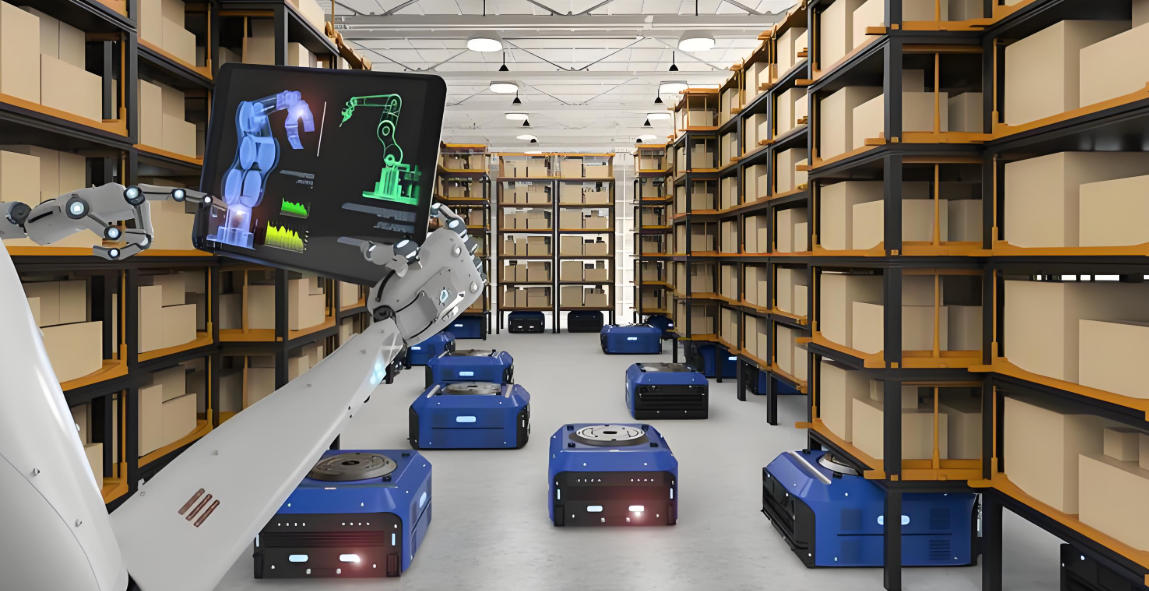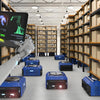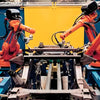TOF 3D Cameras in Warehouses: Boost Sorting & Inventory Accuracy

How Does TOF 3D Technology Enable Smarter Warehouse Sorting and Inventory?
With the rapid expansion of e-commerce, express delivery, and global supply chains, warehouses and logistics operations face unprecedented pressure to improve efficiency, accuracy, and cost-effectiveness. Traditional manual sorting and inventory methods struggle to cope with high-volume orders, dense storage layouts, and tight delivery schedules. TOF (Time-of-Flight) 3D technology, as an advanced sensing solution, is emerging as a key driver of warehouse automation, enabling precise automated sorting and intelligent inventory management. This article explores TOF’s role in modern warehouses, its applications, benefits, cost analysis, and future trends.
What is TOF Technology in Logistics?
TOF 3D technology uses infrared or laser pulses to capture three-dimensional spatial information of objects in real time. Unlike conventional 2D cameras that only record color and texture, TOF cameras measure the distance from each pixel to the sensor, generating high-precision 3D point clouds or depth maps. In warehouse operations, this capability allows systems to recognize parcel size, shape, orientation, and position instantly, providing a foundation for automated sorting, inventory management, and space optimization.
Key characteristics of TOF technology include:
-
Real-time 3D perception: Captures object geometry and spatial positions instantly.
-
High-speed operation: Supports fast-moving conveyor belts and dense sorting lines.
-
Robustness to environment: Functions reliably under low light, strong light, and cluttered environments.
1. Challenges in Modern Warehousing and Logistics
As order volumes surge, especially during peak seasons or promotions, warehouses face multiple operational challenges:
High-volume order processing: Manual sorting and stocktaking cannot keep up with thousands of parcels per hour, leading to delays and reduced service quality.
Rising labor costs: Recruiting and training large teams of sorters and inventory staff increases operational expenses.
Dense storage and complex layouts: Compact aisles and stacked items increase the risk of handling errors, misplacement, and inventory inaccuracy.
TOF 3D technology addresses these challenges by enabling automated, accurate, and efficient sorting and inventory tracking, reducing reliance on manual labor while improving overall operational reliability.
2. TOF Applications in Automated Sorting
Automated sorting is a core application of TOF technology in warehouses. By capturing precise 3D information about parcels, TOF enables:
Real-time object recognition: Measures size, shape, and orientation of parcels, whether regular or irregular.
Dynamic tracking on conveyor belts: Generates depth data and point clouds for moving objects, preventing collisions and reducing damage.
Posture detection for robotic handling: Determines optimal grasping angles for robotic arms or AGVs, increasing sorting accuracy and success rates.
Integration with intelligent algorithms: Links TOF data with WMS (Warehouse Management Systems) to optimize sorting strategies based on weight, volume, destination, or priority.
Through these capabilities, TOF enhances automated sorting efficiency, minimizes errors, and supports high-speed, high-density warehouse operations.
3. Precision Inventory Management and Space Optimization
Beyond sorting, TOF technology significantly improves inventory management:
Automated inventory counting: TOF 3D scanning enables unmanned stocktaking, capturing point cloud data for shelves and parcels, reducing manual errors and labor costs.
Warehouse space visualization: 3D depth data allows managers to view item placement, aisle occupancy, and stacking heights for optimal space utilization.
Intelligent item placement: Systems can calculate the most efficient storage positions based on TOF data, minimizing empty space and handling risks.
Dynamic monitoring: Real-time updates track inbound, outbound, and relocated inventory, supporting predictive replenishment, stockout prevention, and overstock management.
By integrating TOF with WMS, ERP, and AI algorithms, warehouses achieve data-driven inventory decisions, automated shelving, and optimized picking sequences—transforming traditional inventory management into intelligent, adaptive operations.
4. Cost Efficiency and ROI
Implementing TOF 3D technology in warehouses provides tangible operational and financial benefits:
Labor cost reduction: Automated sorting and inventory counting reduce the need for large teams of workers.
Efficiency improvement: Real-time 3D sensing enables high-speed sorting and accurate inventory management, minimizing backlogs and errors.
ROI: While initial investment in TOF systems can be significant, long-term savings in labor, error reduction, and improved throughput typically yield ROI within 1–3 years, especially in high-volume operations.
Operational reliability: Stable performance under diverse environmental conditions ensures consistent automation efficiency, lowering maintenance costs and downtime.
5. Future Trends in Smart Logistics
TOF technology is poised to integrate further with AI, IoT, and robotic systems to support advanced smart logistics:
AI-driven adaptive logistics: AI algorithms analyze TOF data for intelligent route planning, dynamic sorting, and predictive inventory optimization.
Unmanned warehouse operations: Combining TOF, AGVs, and collaborative robots enables end-to-end autonomous warehouse processes.
Predictive inventory management: TOF 3D data enables real-time monitoring and proactive replenishment, reducing stockouts and overstock risks.
Collaborative robot efficiency: High-precision 3D perception allows multiple robots to operate safely and efficiently, even in complex warehouse environments.
The future of warehouse logistics will be characterized by fully automated, data-driven, and highly flexible operations, with TOF technology as a foundational enabler.
Conclusion
TOF 3D technology is revolutionizing warehouse and logistics operations by enabling automated sorting, precise inventory management, and space optimization. With AI integration, it supports intelligent, adaptive, and predictive operations, reducing labor costs, increasing efficiency, and improving accuracy. As warehouses evolve toward unmanned and data-driven management, TOF technology will remain a core driver of modern logistics, delivering high-speed, reliable, and scalable automation solutions.
XT-S240Pro 3D ToF Lidar| Compact, Solid State, 240 Lines, 20m Working Distance

After-sales Service: Our professional technical support team specializes in TOF camera technology and is always ready to assist you. If you encounter any issues during the usage of your product after purchase or have any questions about TOF technology, feel free to contact us at any time. We are committed to providing high-quality after-sales service to ensure a smooth and worry-free user experience, allowing you to feel confident and satisfied both with your purchase and during product use.







